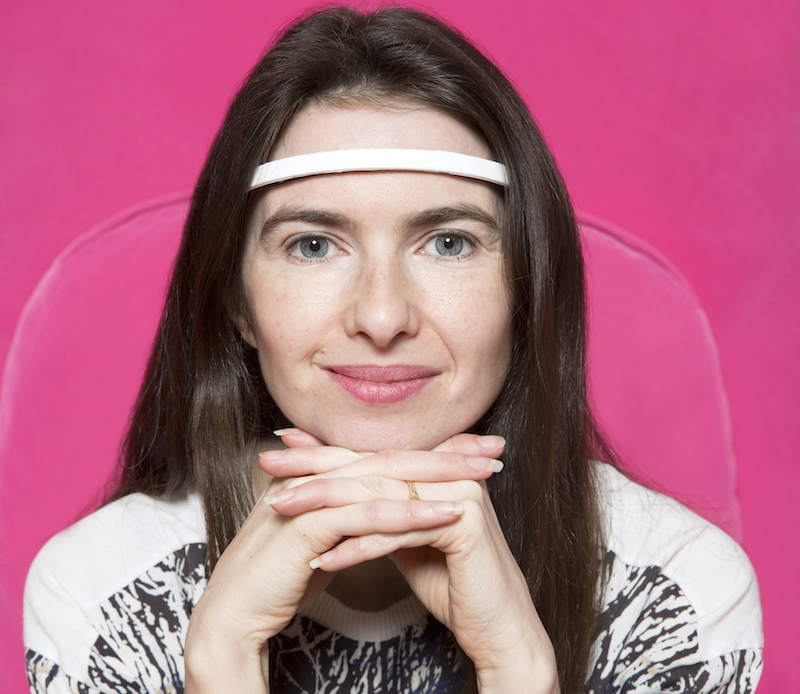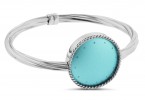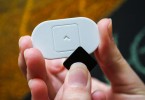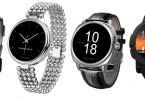Wearable Style News recently chatted with Ariel Garten, CEO and Co-Founder of InteraXon, and creator of Muse, a new wearable device that teaches people how to meditate. A neuroscientist, therapist, and fashion designer, Garten spent time researching Parkinson’s disease and hippocampal neurogenesis while at Toronto’s Krembil Neuroscience Centre, and opened Toronto Fashion Week in ’03 before co-founding InteraXon in 2009.
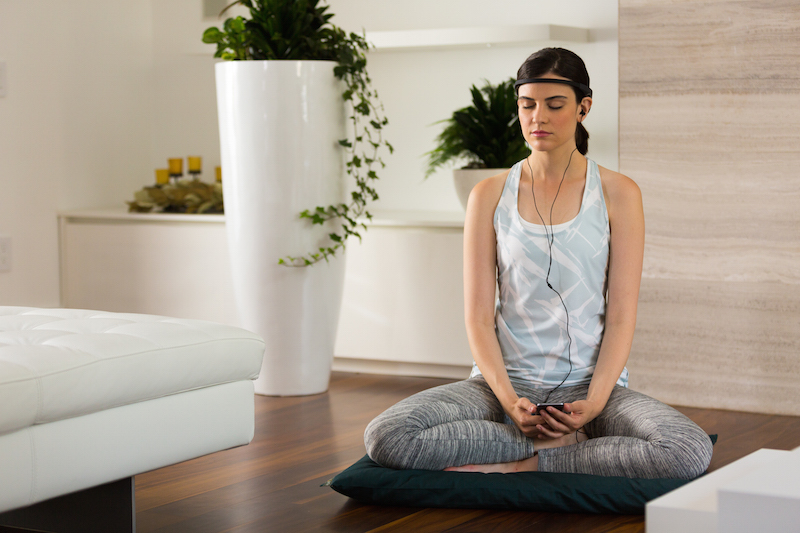
Photo source: Muse
WSN: So how does Muse work? Break it down for us.
Ariel Garten: Muse is a wearable device that sits on your head and tracks your brain activity in real time. And it does something completely amazing, which is it teaches you to meditate. Most people know that meditation is extremely good for you, but it’s really hard to do. You can sit down but you don’t know what to do. Muse solves all of that by giving you real time feedback about your brain. While you meditate, it lets you know when you’re in the zone, in a state of focused attention, and when your mind is wandering, giving you real time feedback to guide and encourage you back to a state of focused attention.
WSN: Who is Muse meant to help — those who already meditate or those who want to start?
Ariel Garten: Both. Our device is like having a personal meditation trainer. So it’s for everybody who tries and for everybody who already has practiced and is struggling to stay on the bandwagon and to keep motivated and keep going. I know thousands of people who are like, “I can never meditate, I’ve tried, it really sucks. My brain just doesn’t want to do that.” Muse shows them what to do and it guides them each and every day to experience all of the benefits of meditation: improved focus, decreased stress, ability to have insight into internal process (the space between your emotions and your responses), and improved productivity.
Is it similar to Fitbit, where the device trains you?
Absolutely. Fitbit shows your steps, encourages and motivates you, and exposes you to what you already know — that simply walking is not that complicated — and makes it more visible so it changes your behavior in response to it.
And how does that compare to what Muse does?
Our brains are these closed boxes in mysterious places. Muse gives you access to something that you didn’t have access to before. It gives you insight into a process. We all experience our minds wandering every day, we just don’t realize it. So, for example, if I’m sitting and I get distracted by something in the past and I follow the distraction in my mind — I don’t realize it’s a choice. Once I am aware I got distracted, I have the choice to bring my attention back. I’ve now learned that skill and I’ve now learned the mastery of my mind. Nobody ever realizes that you can really make these choices to control the mind, and once you start making them, things are so much better. You no longer have those thoughts, the anxiety and stress melts away. You’re much more focused, you pay attention to what people are saying to you, and you’re more aware.
How does it indicate that your mind has wandered off?
The metaphor we use is that your mind is just like the weather. When you’re thinking, when your mind is wandering, distracted, and you’re ruminating all these things, what you hear through Muse is windy or stormy. When you come to a state of clear, focused attention or quiet, you get real time audio feedback. So when your mind is wandering you hear stormy sounds, and when your mind is clear and focused, you hear it as quiet and pleasurable. It is very, very quiet, and you’ll hear a little bird tweeting in your ears as an indication that you’re maintaining that state of focused attention.
How often does someone typically wear this?
You do it for ten minutes a day. You start just three minutes a day, and in three minutes you learn the skill and you get the best of it. Then the next day you come back and eventually move up to five, then ten minutes, and it feels like a meditation practice. We just did a study with the University of Toronto and Waycross Hospital, here in Canada. They looked at people who are using this and found that using it for 10 minutes a day for six weeks decreases somatic symptoms, including headaches and nausea, and increased their happiness. It also increased their feelings of common relaxation, improved their cognitive ability, decision-making, and attention processes.
So every parent with a child about to take standardized testing would want to get them involved in Muse.
Absolutely.
That’s a competitive advantage. What are some other health care implications?
We have a number of insurance companies who are currently in the midst of running studies. We have lots of doctors who recommend Muse to their patients. Your doctor can tell you to make exciting lifestyle changes, like to exercise and meditate, but your doctor isn’t just telling you how to do something you have no idea what to do. Instead, the doctor hands you the Muse and you go home and are sure what to do. It shows what your brain is doing and you start to practice. Then you can go back to your doctor and show him your results and you’re off on your merry way.
Do you have a sense of your scale so far in terms of the number of people using this?
Yeah, there are tens of thousands of people musing all over.
So “musing” is the verb?
Yes, users refer to themselves as Musers, and when they use it, they’re musing.
Is there any kind of a user group or community growing around musing?
We’ve started to notice it growing quite organically, that Musers are communicating to each other through our social channels. Now we’re starting to create more formalized groups because people who love the Muse are really excited about it. They go around and tell everybody, and they talk to other people who have Muses. It becomes something you want to talk to people about since it’s such a fascinating experience that you have on a daily basis. We’ve also started to do things like run sessions, where 20 people can all be taken through guided meditation together.
From a personal standpoint, are there some wearables out there that you use and that you really like?
Definitely. Muse is something that I use and love and it’s fundamentally changed my life. I’m also a big fan of Misfit Shine. It’s quite lovely, and with the various integrations, you can add it and subtract it to various parts of your wardrobe. I obviously use Bluetooth earpieces - they’ve evolved. At the office we have watches, Nike Fuel, Jawbone Up, various versions of Fitbit Flex. We’re constantly testing and understanding what people are doing, what works, what doesn’t work, how you create great UI experiences, and how to continue to give value.
If people buy the Muse and they don’t use it, that’s a problem. How do you make sure that people get started and stay with it long enough to experience the benefits?
We have a motivational architectural side of it that keeps you coming back. There are points, scores, challenges. So as soon as you do it, you’re challenged to do the next thing and come back the next day. And then once you use it for core sessions, every time you come back you’re learning something new and you are excited about what you want to come back and learn. Also, different than tracking your steps, your brain is just such a mystery and it is there for you to discover and unlock. You’ve just been governing an aspect of your physical self — your brain governs your entire experience of life. And if you can understand how to gain control to improve your brain, you can fundamentally change your life.
It feels like you are at the center of what could very well be a lifestyle ecosystem.
The developers are doing everything from thought control drones, to change in brain state, to e-mail programs that adjust behavior based on the level of focus, to integrations, so they’ve got a broad range of stuff.
The minute you get into this area of gaining control and fundamentally changing things, other things come to mind: dietary issues, movement issues, relaxation.
Over time you’re going to see more and more things that come out and develop the communities that let you explore a range of different experiences.
How important was the design of the Muse? It’s very cool looking, but it’s also very delicate.
My background is also as a professional designer, so fashion was an incredibly important element in order for a wearable to truly be adopted and become part of your daily life. It needs to be sufficiently cool and exciting so that you want to wear it. So the design was a key part of the process. We had to design something for this incredibly complicated technology that had to fit on everybody’s head, and there’s a very precise form factor in order to function effectively. But it also had to look sleek and beautiful and cool and not so out there that you’d be intimidated by it. We wanted it to be intriguing. It invites you into a comfortable future.
It really does. Did you do all the design work yourself, or did you have some help from engineers? It must have been a complicated task.
It was primarily led by myself and my co-founder, so the internal team did design and we worked with some amazing designers.
There are seven sensors in the device. In the future, will devices have more?
A standard EG can have anywhere from 19 up to 128 or more. That gives you more resolution on your head. The more sensors you have, the more details that you can see. We stripped it down to the minimum number of sensors, so it still allows us to create rock solid experiences and outcomes.
So you have just enough to do the things that you want to do, and a high enough resolution to get a lot. In theory there could be a lot of medical claims related to this, but then you’re into all sorts of issues about regulatory devices and so forth. How is this device classified?
It is classified in the same way that a heart rate monitor is. If you think about it, it’s no different than heart rate monitor straps. The FDA has a new category for all of these devices.
What does the future look like for this kind of technology?
Brain assistive technology is going to be a fundamental way that we interact with the world and ourselves in the future. You’re going to see more and more of these cases for it. One of the places that we know it’s going to go is in healthcare. We have more than 120 different research institutions that are currently using Muse for a wide variety of scenarios: epilepsy, ADHD, traumatic brain injury, chronic weak conditions, and so on. More people are using the device to find significant benefits in their life and help them deal with the stress and sadness of everyday. As we live in a society where there are more and more distractions, we’re recognizing more and more the need to be able to use tools and techniques to help find our center, to find our way through the confusion and cut through all of the noise and help us return to ourselves. And so, products like Muse are becoming ever increasing and important.
Purchase Muse: The Brain Sensing Headband - Black![]() on Amazon.
on Amazon.

